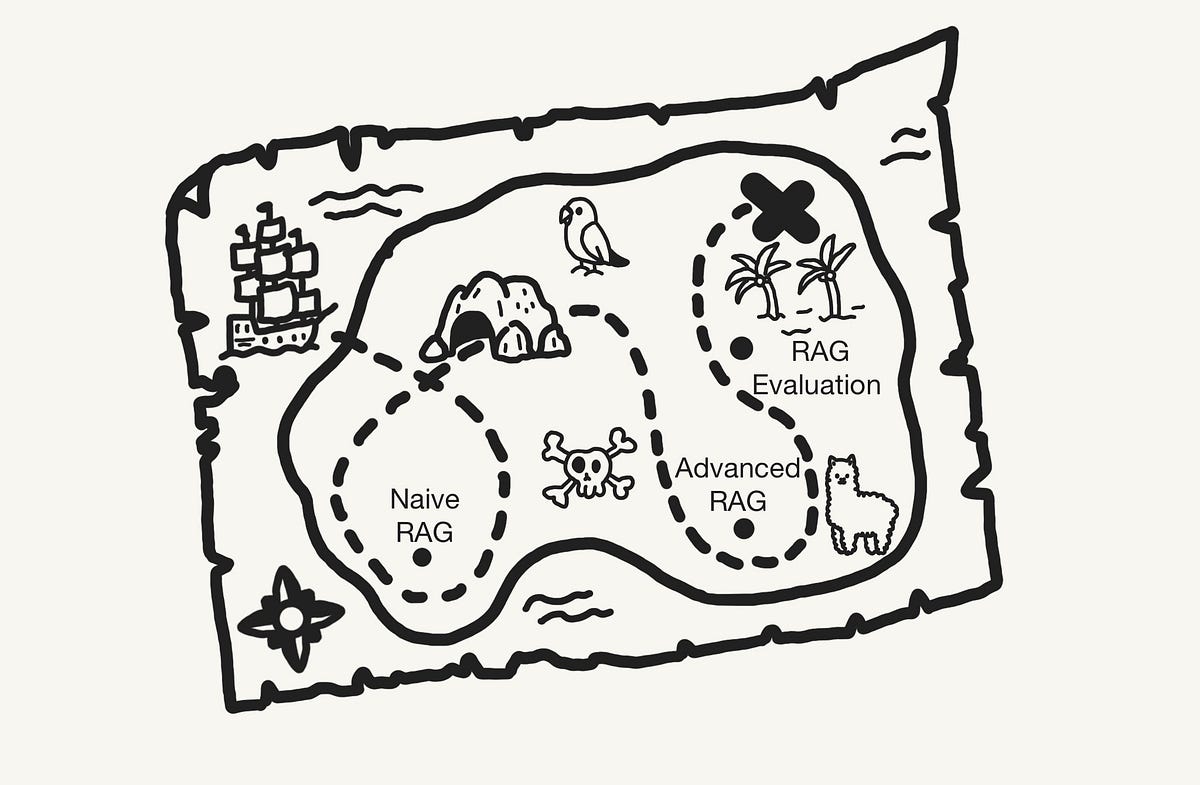A Comprehensive Guide to Building Retrieval-Augmented Generation Systems for Production-Ready Applications
核心概念
Retrieval-Augmented Generation (RAG) is a powerful technique that combines large language models with external knowledge sources to generate more informative and accurate responses, reducing hallucinations.
摘要
This article provides a comprehensive overview of building retrieval-augmented generation systems. It covers the following key points:
-
Introduction to RAG:
- RAG is a technique that combines large language models with external knowledge sources to generate more informative and accurate responses.
- The concept of RAG was first published in a 2020 paper by Lewis et al. and has gained significant interest since the release of ChatGPT.
-
Naive RAG Paradigm:
- Naive RAG consists of two stages: ingestion and inference.
- In the ingestion stage, an external knowledge source is prepared.
- In the inference stage, the retrieved context and user query are used to augment a prompt template, which is then used to generate an answer.
-
Advanced RAG Paradigms:
- Since naive RAG has some limitations, advanced RAG paradigms have emerged.
- These advanced paradigms introduce new concepts and techniques to improve the performance and capabilities of RAG systems.
-
Living Document:
- This article is intended as a central place and a curated collection of articles on building retrieval-augmented generation systems.
- The article will be regularly updated to keep it current with the latest developments in the field.
客製化摘要
使用 AI 重寫
產生引用格式
翻譯原文
翻譯成其他語言
產生心智圖
從原文內容
前往原文
medium.com
Building Retrieval-Augmented Generation Systems
統計資料
None
引述
None
從以下內容提煉的關鍵洞見
by Leonie Monig... 於 medium.com 04-02-2024
https://medium.com/@iamleonie/building-retrieval-augmented-generation-systems-be587f42aedb
深入探究
How can advanced RAG paradigms address the limitations of the naive RAG approach?
Advanced RAG paradigms can address the limitations of the naive RAG approach by introducing new techniques and strategies to enhance the retrieval-augmented generation process. One key aspect is the incorporation of more sophisticated retrieval mechanisms that can better filter and select relevant information from external knowledge sources. This can help improve the quality and accuracy of the generated responses by providing more precise context to the language model. Additionally, advanced RAG paradigms may involve the use of advanced neural architectures or fine-tuning strategies to optimize the model's performance in handling complex queries and generating coherent responses. By leveraging these advancements, advanced RAG systems can overcome the shortcomings of the naive approach and achieve higher levels of effectiveness and reliability in generating responses.
What are the potential challenges and trade-offs in implementing a production-ready RAG system?
Implementing a production-ready RAG system comes with various challenges and trade-offs that need to be carefully considered. One significant challenge is the scalability and efficiency of the system, especially when dealing with large-scale knowledge bases and high volumes of user queries. Ensuring real-time responsiveness and low latency in retrieving and generating responses can be a demanding task that requires robust infrastructure and optimization techniques. Another challenge is the quality and relevance of the retrieved information, as inaccuracies or biases in the external knowledge sources can negatively impact the generated responses. Trade-offs may arise in balancing the trade-off between model complexity and inference speed, as more sophisticated models may require more computational resources but can offer better performance. Additionally, there may be trade-offs between the diversity and specificity of the generated responses, as optimizing for one aspect may come at the expense of the other. Overall, implementing a production-ready RAG system involves navigating these challenges and trade-offs to deliver a reliable and efficient system.
How can RAG systems be leveraged to enhance specific applications or domains beyond general language understanding and generation?
RAG systems can be leveraged to enhance specific applications or domains beyond general language understanding and generation by tailoring the retrieval and generation processes to the unique requirements of the domain. For example, in the medical domain, RAG systems can be trained on specialized medical knowledge bases to provide accurate and contextually relevant information to healthcare professionals. This can support tasks such as diagnosis assistance, treatment recommendations, and patient education. In the legal domain, RAG systems can be customized to retrieve and generate legal documents, case summaries, or legal advice based on specific legal databases and regulations. By fine-tuning the RAG system on domain-specific data and knowledge sources, it can provide valuable insights and support in specialized fields where precise and reliable information is crucial. Additionally, RAG systems can be integrated into existing applications or workflows to automate information retrieval and generation tasks, improving efficiency and productivity in various domains.
0
